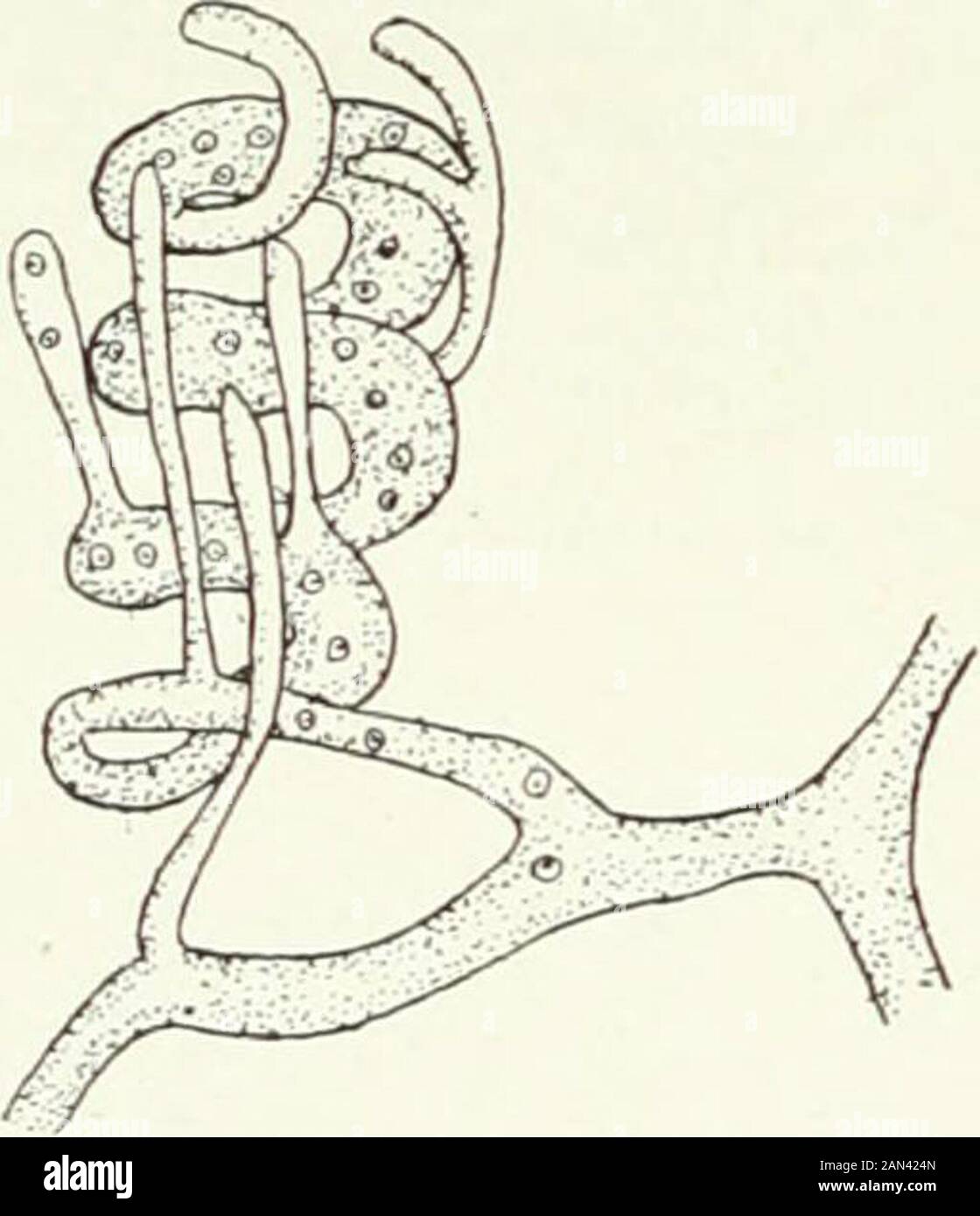Fungi, Ascomycetes, Ustilaginales, Uredinales . he formation of a single fruit. These, it would appear, areall borne upon the same hypha ; they may arise from adjacent cells, andindeed sometimes open into one another, so that the whole series seemsequivalent to the oogonial region of A. carneus. Each cell, however, isdescribed as bearing a twisted, multicellular trichogyne, which would indicatethat each is an independent organ. Large ascogenous hyphae arise from theseveral oogonia, and the view suggests itself that the so-called trichogynemay be in fact a premature ascogenous hypha. It is, at

Image details
Contributor:
The Reading Room / Alamy Stock PhotoImage ID:
2AN424NFile size:
7.2 MB (171.9 KB Compressed download)Releases:
Model - no | Property - noDo I need a release?Dimensions:
1468 x 1703 px | 24.9 x 28.8 cm | 9.8 x 11.4 inches | 150dpiMore information:
This image is a public domain image, which means either that copyright has expired in the image or the copyright holder has waived their copyright. Alamy charges you a fee for access to the high resolution copy of the image.
This image could have imperfections as it’s either historical or reportage.
Fungi, Ascomycetes, Ustilaginales, Uredinales . he formation of a single fruit. These, it would appear, areall borne upon the same hypha ; they may arise from adjacent cells, andindeed sometimes open into one another, so that the whole series seemsequivalent to the oogonial region of A. carneus. Each cell, however, isdescribed as bearing a twisted, multicellular trichogyne, which would indicatethat each is an independent organ. Large ascogenous hyphae arise from theseveral oogonia, and the view suggests itself that the so-called trichogynemay be in fact a premature ascogenous hypha. It is, at least, difficult todistinguish the one from the other in Dangeards figures, and the speciescertainly requires further investigation. Saccobolus violascens is a violet or greyish violet species about I mm. indiameter. The archicarp is a coiled structure and is divided into only threeor four cells (Dangeard), the central of which gives rise to ascogenoushyphae, while vegetative filaments grow up from the stalk and neighbouringmycelium (fig. 82)..